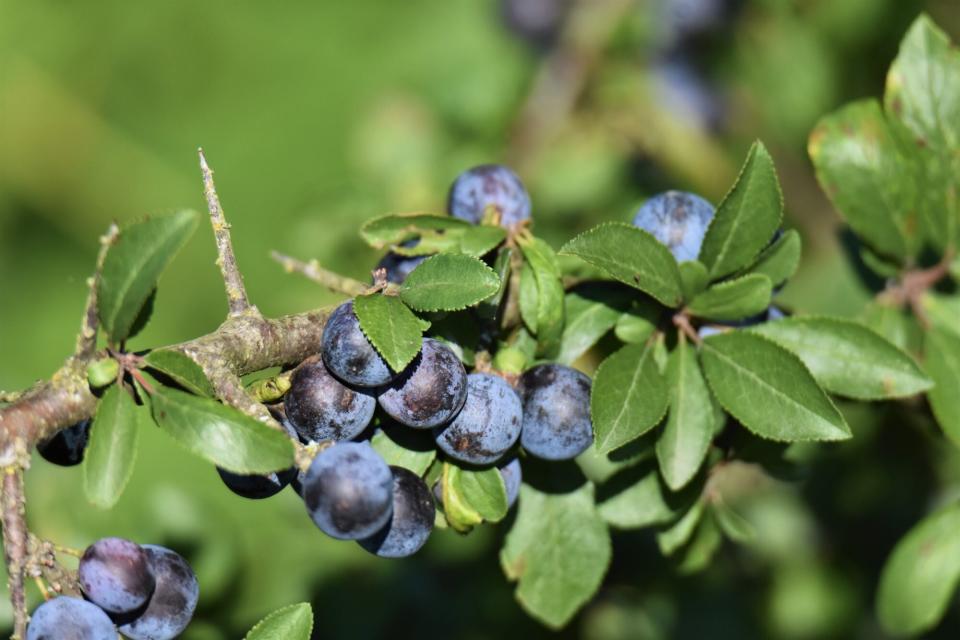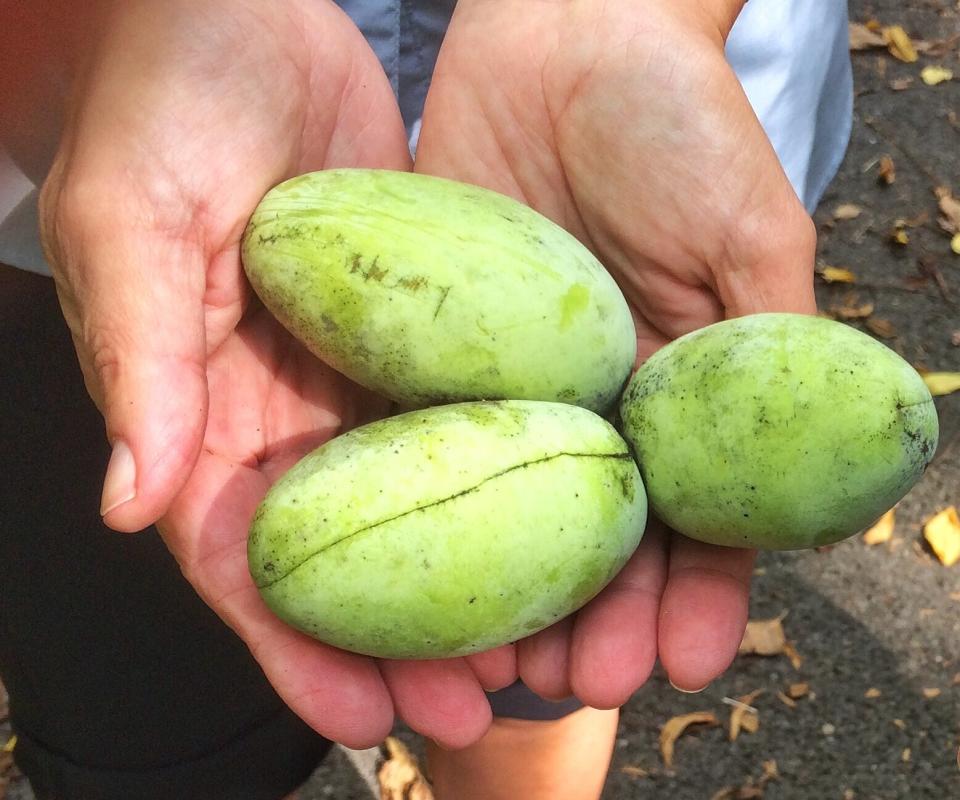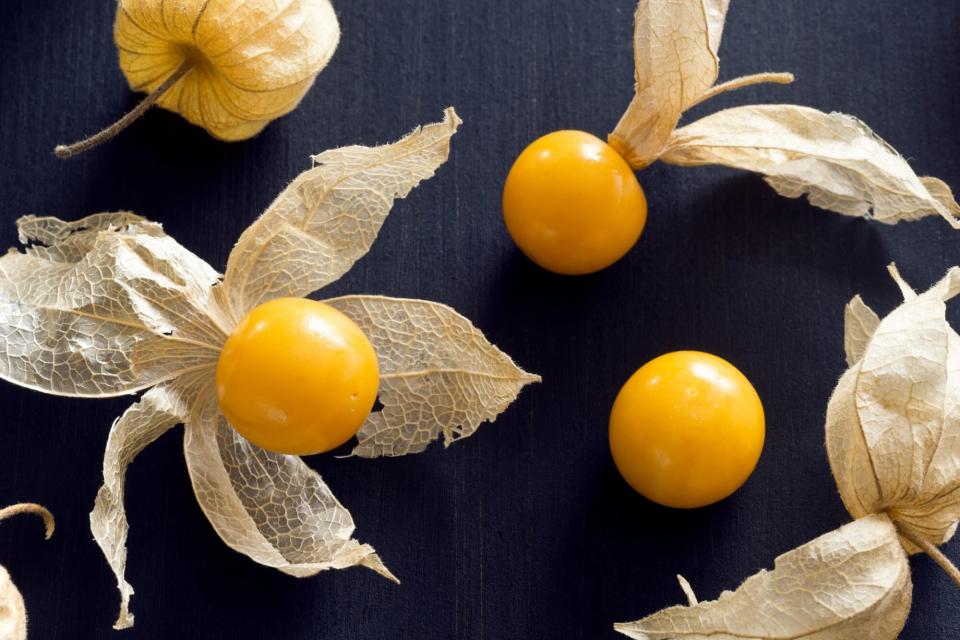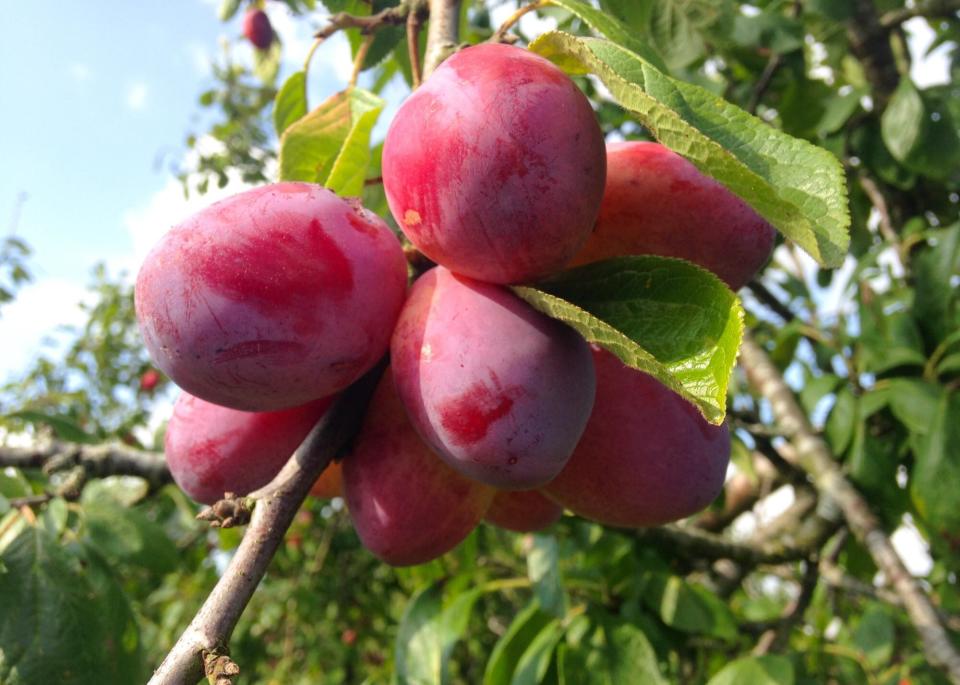6 Wild (and Little Known) Southern Fruits You Have to Try This Summer

Getty Images
Peaches, watermelon, and berries are known worldwide as some of the summer bounties of the South, but those who grew up here are savvy to the wild fruit hiding around riverbeds, tucked into trees, and growing by the side of the road. These lesser-known wild summer fruits may require you to head to your farmers' market or forage through some backfields, but they are well worth the adventure.
Creamy custard-like pawpaws scooped from their skin and sour-sweet mayhaw berries turned into jellies and syrup make summer in the South special and unlike any other place. Discover these fruits or remember them with this round-up of the six best wild Southern fruits.

Getty Images
1. Huckleberry
You're probably familiar with Huckleberry Finn's character from the book The Adventures of Tom Sawyer, but the fruit grows wild in most of the South. The native fruit inspired several phrases in the 1800s, including "a huckleberry over my persimmon" (another wild American fruit), to indicate that the task was beyond someone's abilities.
The small berries resemble the more common blueberry but are pretty different. Huckleberries have large seeds and can come in a range of hues, from red to blue and purple. Lighter berries are tart, and deeper colored ones are sweeter.
The wild fruit is in season from mid-May to June. While they grow natively in most of the Southern United States, the bush has resisted cultivation, so if you're looking to get your fix of huckleberries, suit up to forage or scour your local farmers' market. The berries can be eaten raw, but they also work perfectly in pies, muffins, or cobbler.

Steve Bender
2. Pawpaw
Known by many wild and folksy names like the Hoosier or Poor Man's banana, or a custard apple, the pawpaw is distinct for its tropical flavor and creamy texture. Shaped like a potato, the pawpaw has a mottled green or yellow skin with black spots and bright yellow flesh.
Described as tasting like a banana, mango, and pineapple, pawpaws are beloved for their fruity and sweet flavor. Split the fruit open and scoop into the sweet, custard-like filling to eat.
Pawpaws are in season in the late summer, from August to October. Because the fruit is highly perishable, it can't be easily transported and has a two- to three-day shelf-life. If you do find pawpaws locally, try making them into ice cream, puddings, or turning them into smoothies. The fruit is also perfect eaten fresh. Pawpaws can be found throughout the South, mainly in rural areas and the Florida panhandle.

Courtesy Louisiana Mayhaw Organization
3. Mayhaw
Tiny, tart, golden or red berries may not appeal to the untrained tongue, but mayhaws become one of the South's favorite culinary treasures once cooked down and sweetened.
Growing in the wetlands of Texas, Alabama, Mississippi, Louisiana, Georgia, and Florida, this fruit is ready to be foraged in May, thus the name. Few enjoy the fruit raw, as it lacks in flavor, so instead, jellies, jams, and syrups are a common way of preserving and enjoying this berry. Slathered on toast, baked into pies, or even turned into wine, the fruit is loved for its sour and sweet flavor.
You can search for a pick-your-own spot to get your hands on fresh mayhaws in the early summer or local farm stands to purchase some ready-made mayhaw jelly to just get to the good part.
4. Scuppernong Grapes
Discovered along the banks of North Carolina's Scuppernong River, this fruit is a variety of Muscadine grapes, another native American grape variety. With a thick, bitter skin, scuppernong grapes aren't like those you may pick up at the grocery store. Bite off the stem and peel off the tough exterior to enjoy the candy-sweet pulpy inside.
Scuppernongs ripen in late summer, typically from the end of July to October. Like other grape varieties, scuppernongs are ideal for making wine, though a sweet wine. Vinegar, jam, fruit butter, and the classic scuppernong or hull pie are great ways to use your scuppernongs. It's best to remove the skin before eating or cooking, as it is tough though edible.
The fruit is a bit of celebrity in the South, featured in books, songs, and art, including Harper Lee's To Kill a Mockingbird. While this fruit is native to the South, you can cultivate it with suitable soil in your garden.

Getty Images
5. Ground Cherry
Wrapped in a papery husky, ground cherries are more like the Southwestern tomatillos than the deep crimson-colored variety we know. Found all over the South, ground cherries grow on small sprawling shrubs and ripen in late summer. The fruit under the husk is an orangey-red orb, like a little cherry tomato. When ripe, ground cherries fall to the ground, thus how the plant acquired its name.
Husk cherries and strawberry tomatoes are a couple other common names for this uncommon fruit. Ground cherries have a mild tomato-like flavor and a surprisingly tropical pineapple or mango sweetness. Try them raw or baked into pies, cakes, or cooked into jams. Since ground cherries are in the same family as tomatoes, they work well in salsas and spreads.

Getty Images
6. Wild Plums
Traditionally used by aboriginal people for food and medicinal purposes, wild plums are small and tart, especially compared to our commercial varieties. Thick, tannic skins must be removed to savor the sweet and sour interior.
Wild plum trees can grow in Georgia in shrub-like trees along river banks. Look for small purple or red fruit with a pit. The fruit is ripe and ready to be picked when the flesh has a little give to it.
Because the fruit can be pretty unappealing raw, most folks enjoy preserving wild plums in jams, jellies, and syrups or baking them in pies and tarts. Their sweet-sour flavor is ideal for barbecue sauce; just remember to remove the skin.

